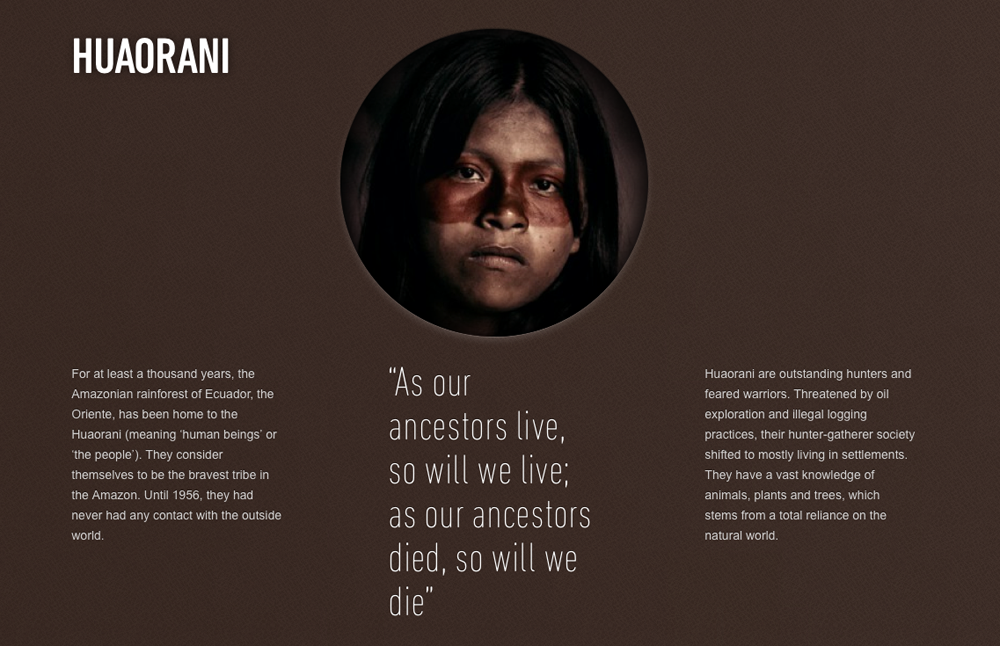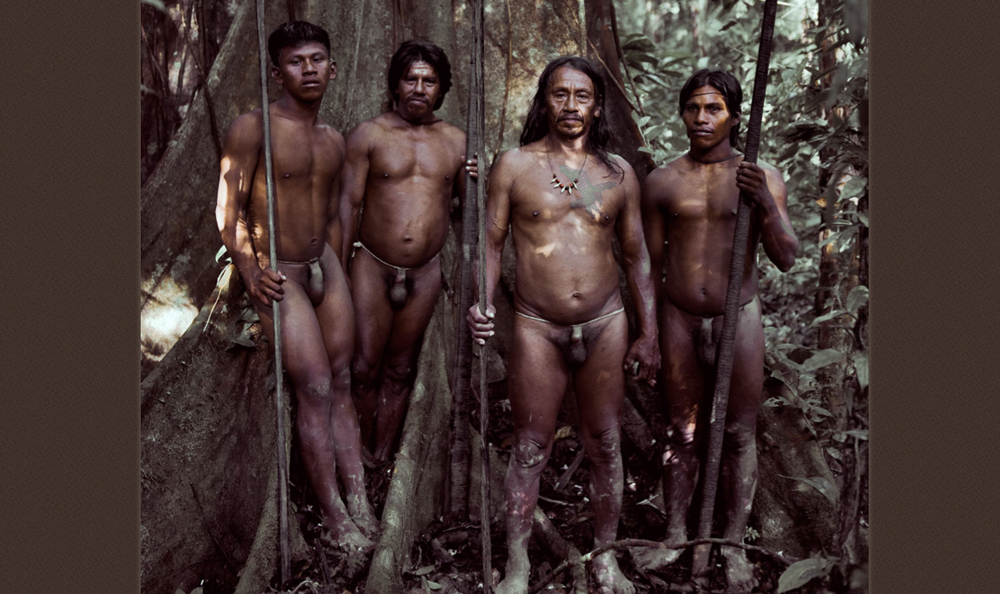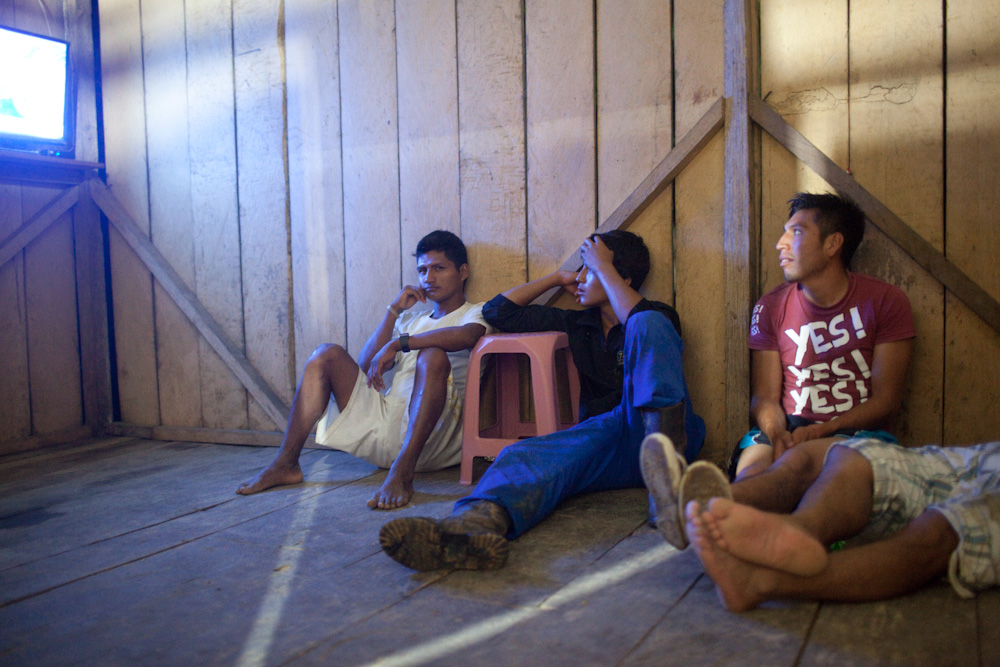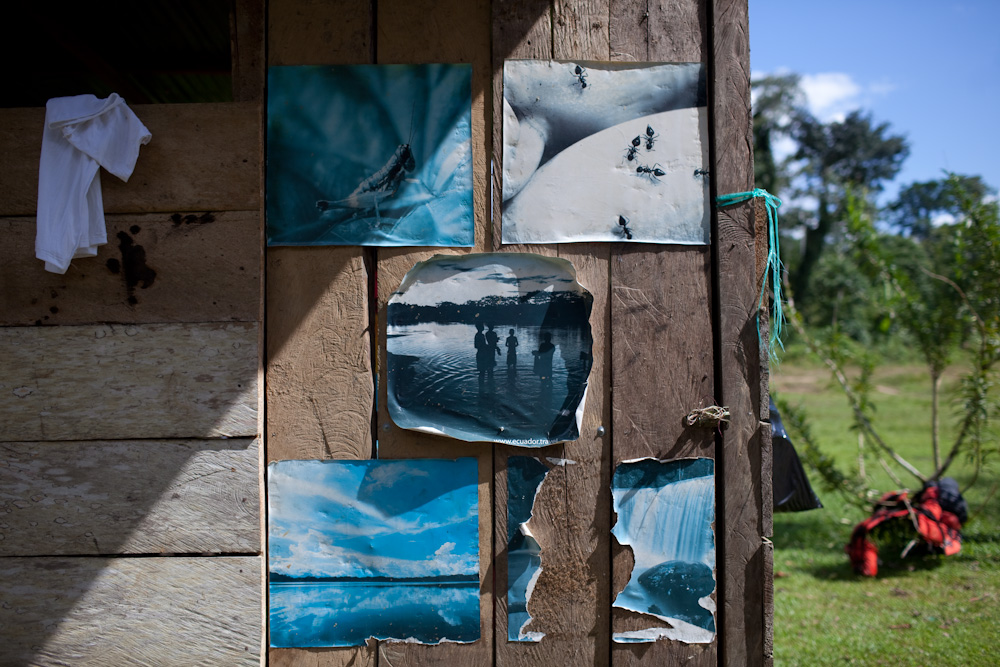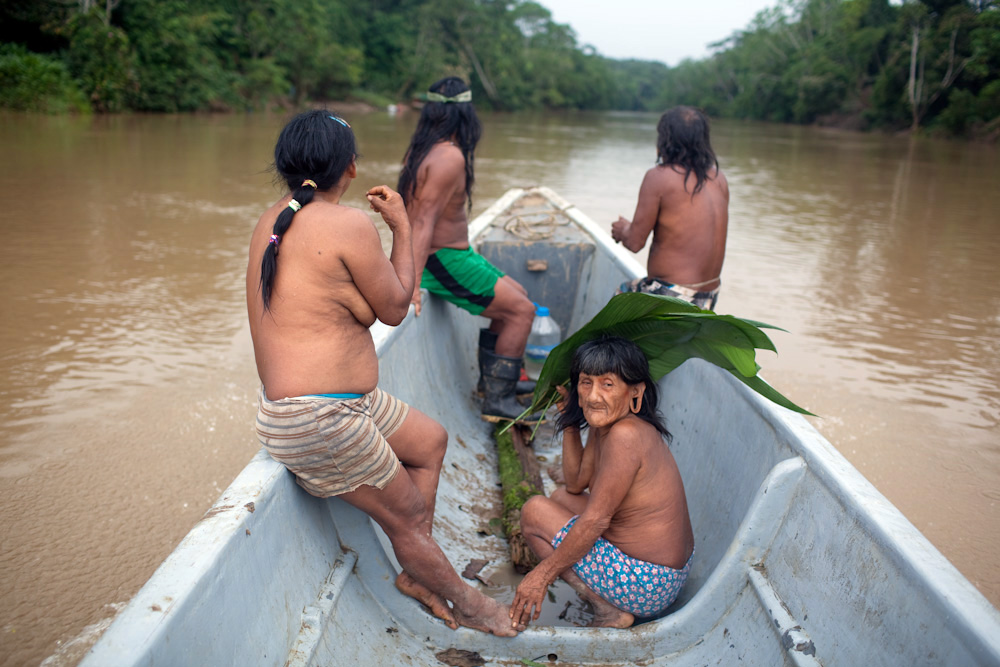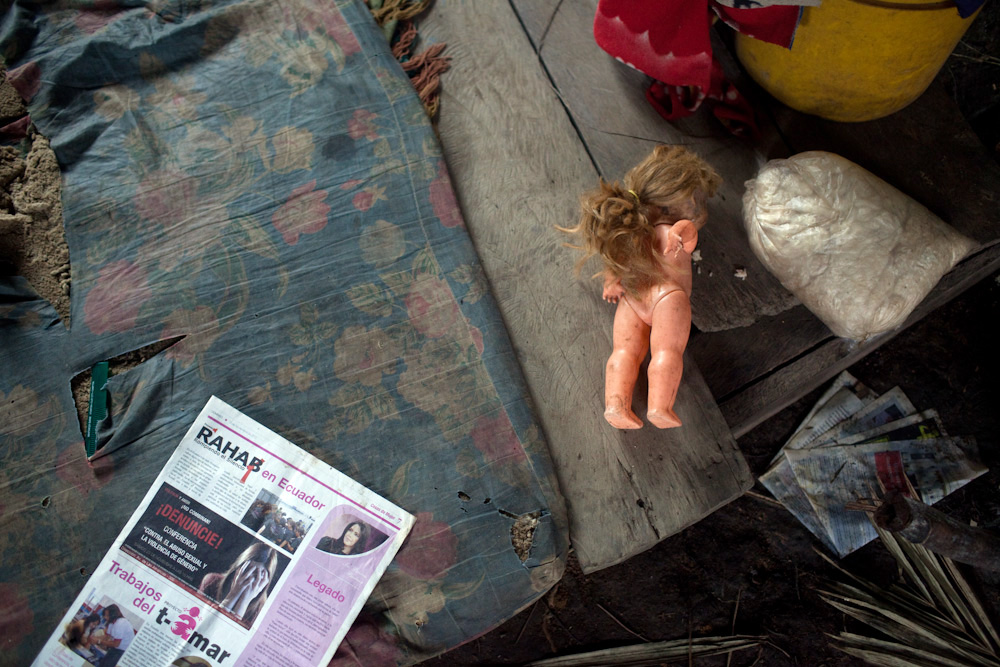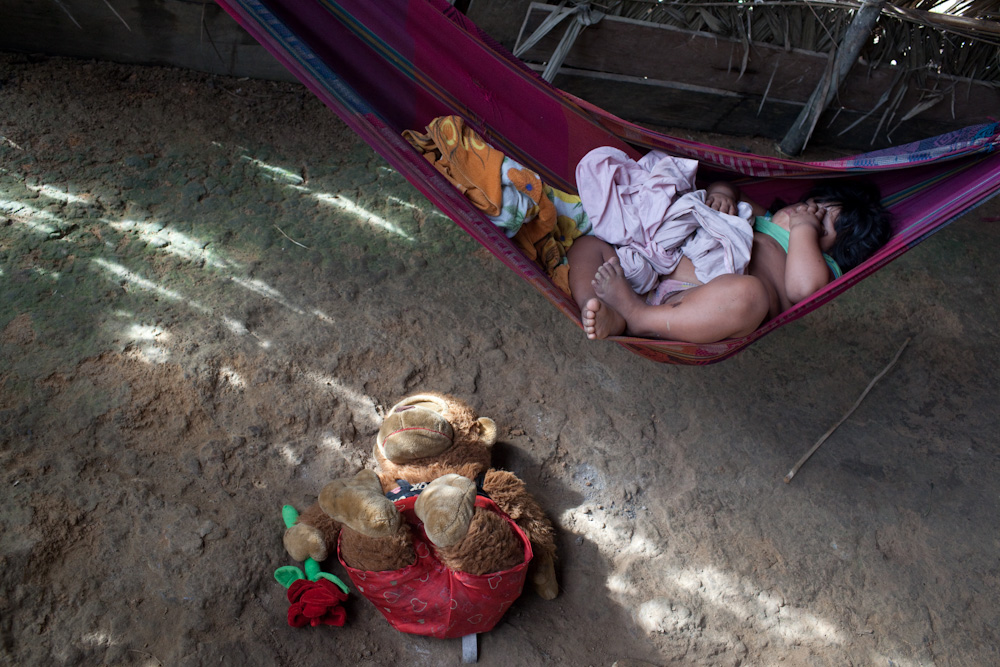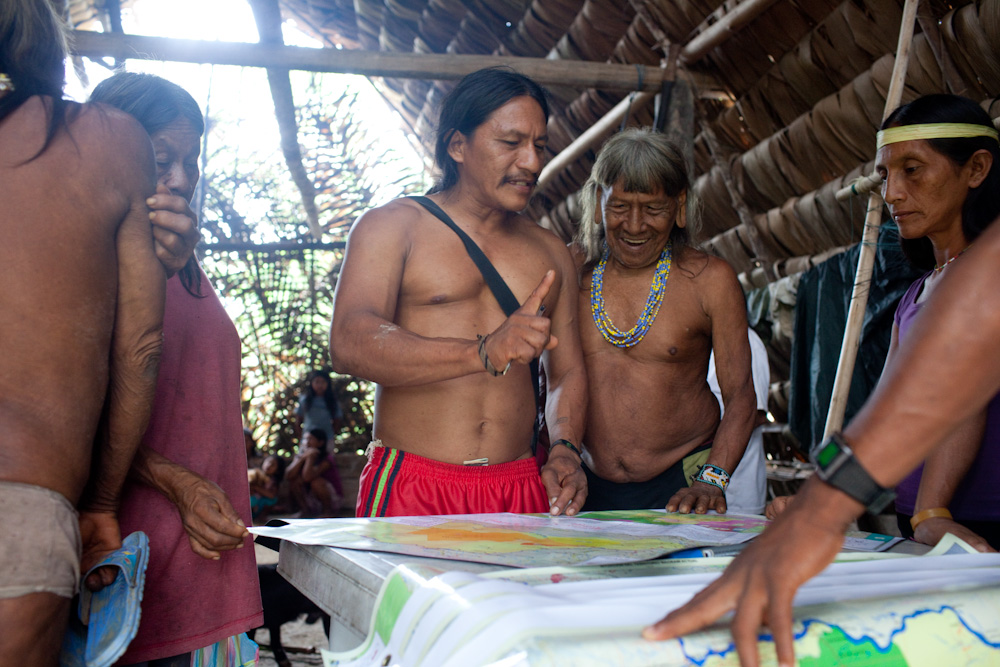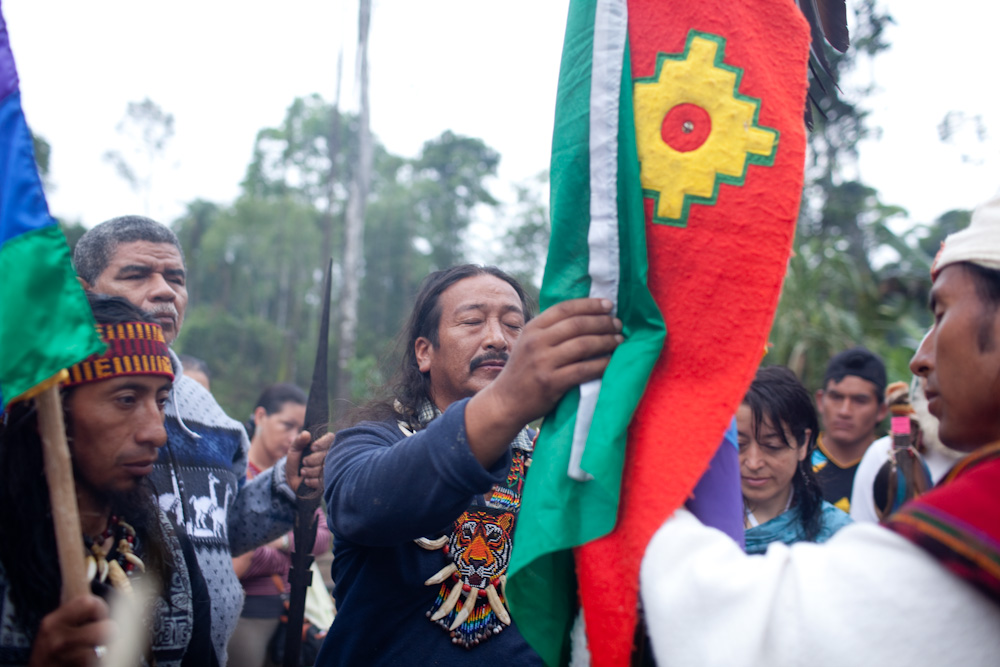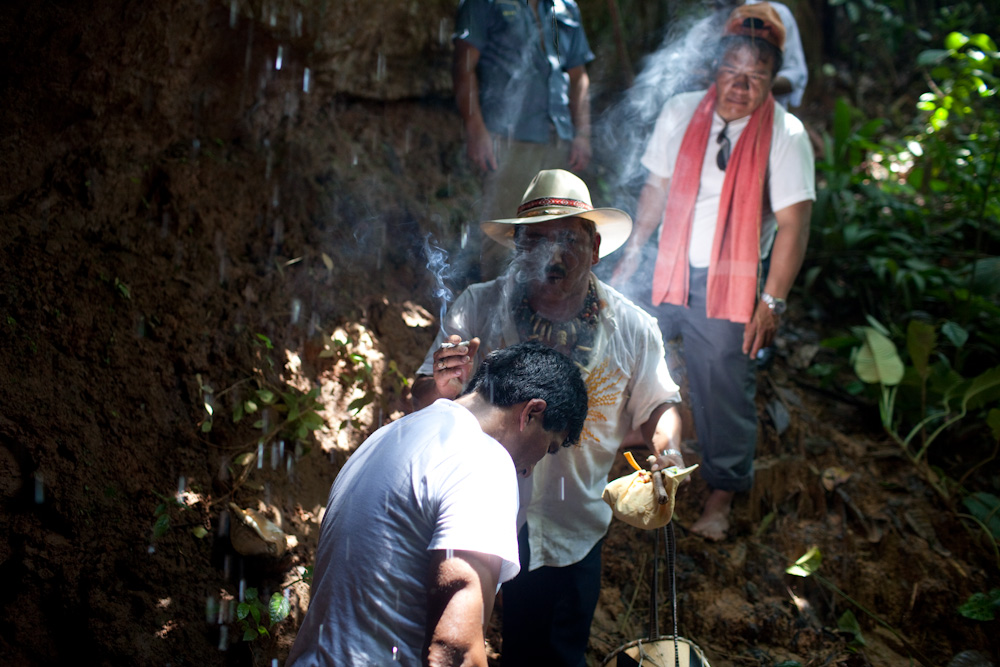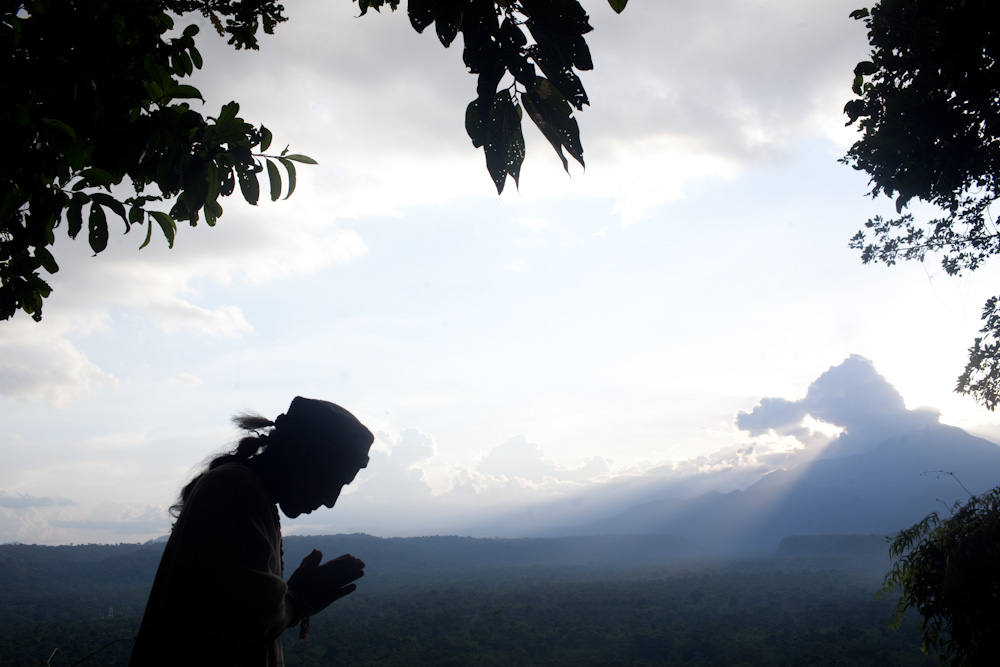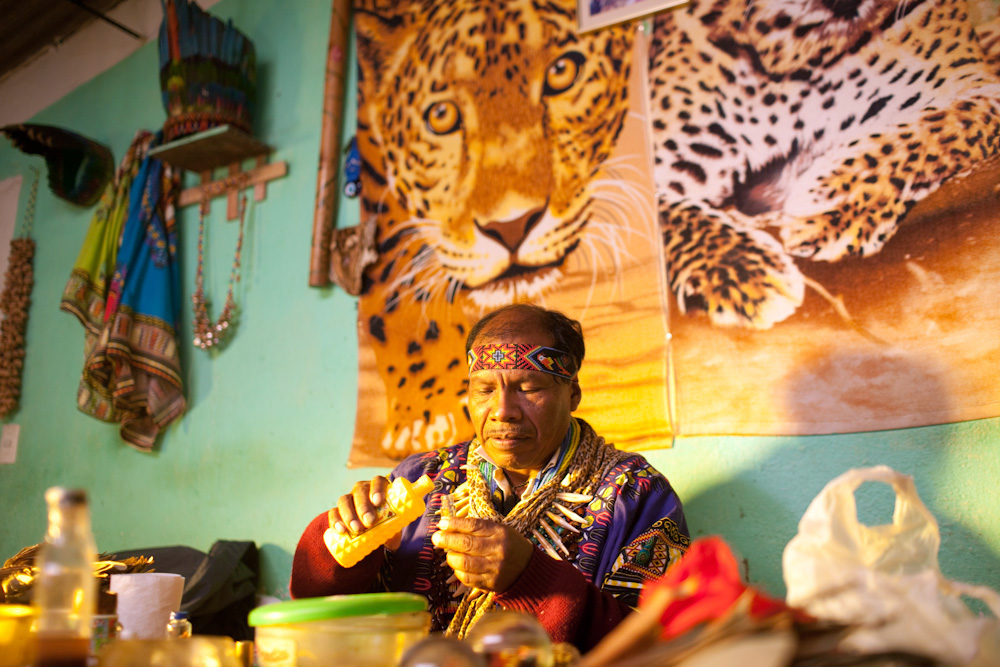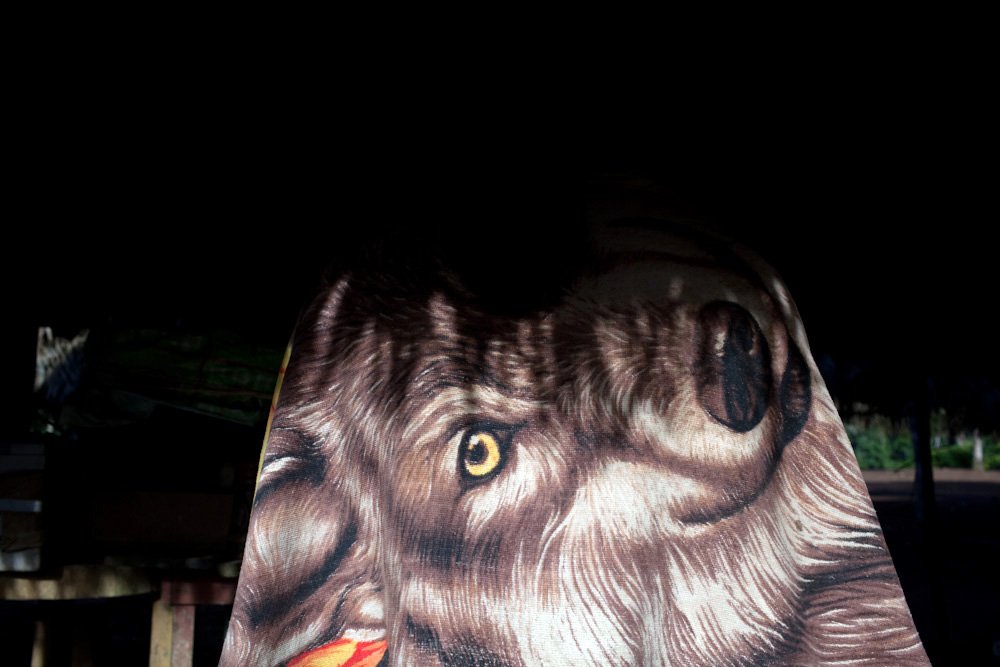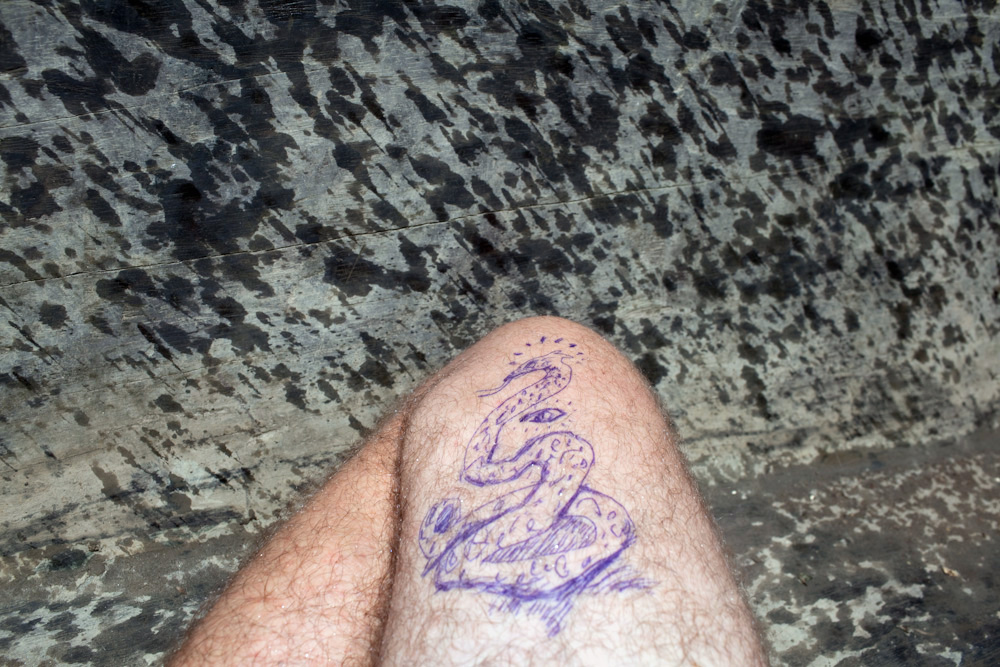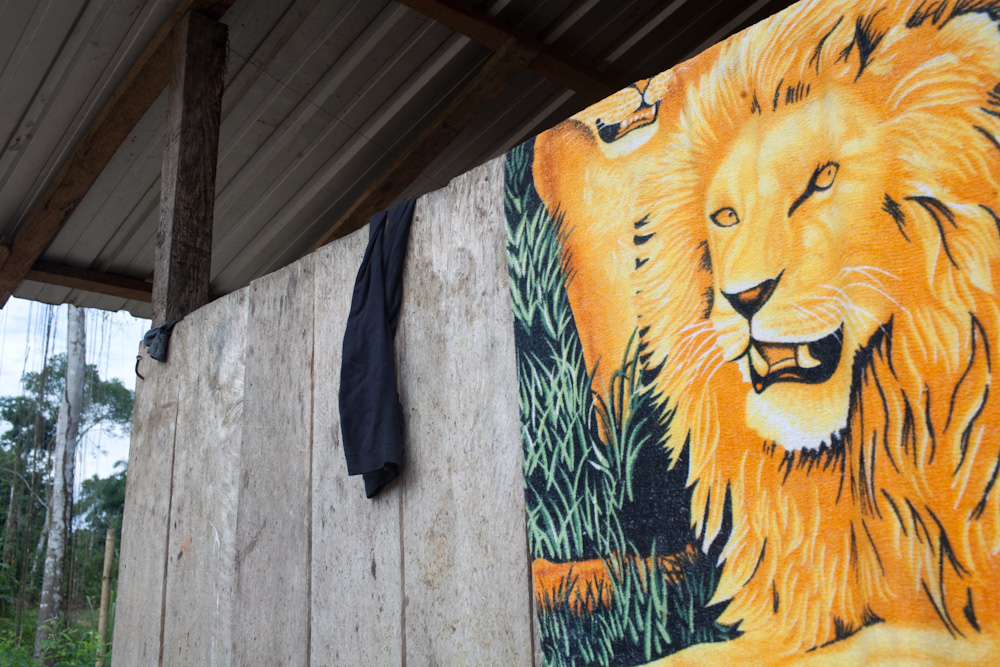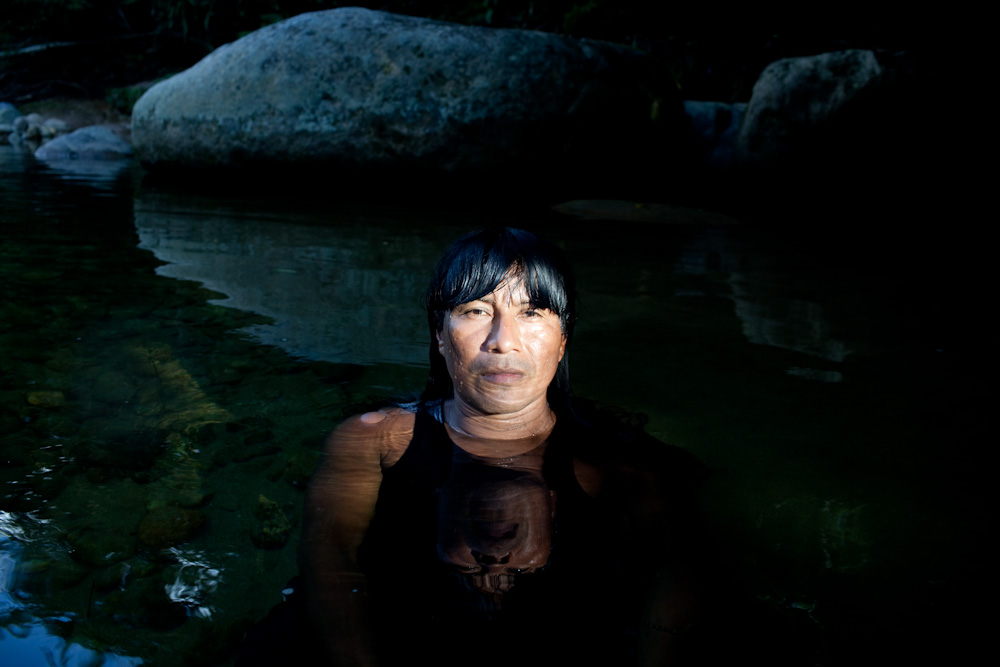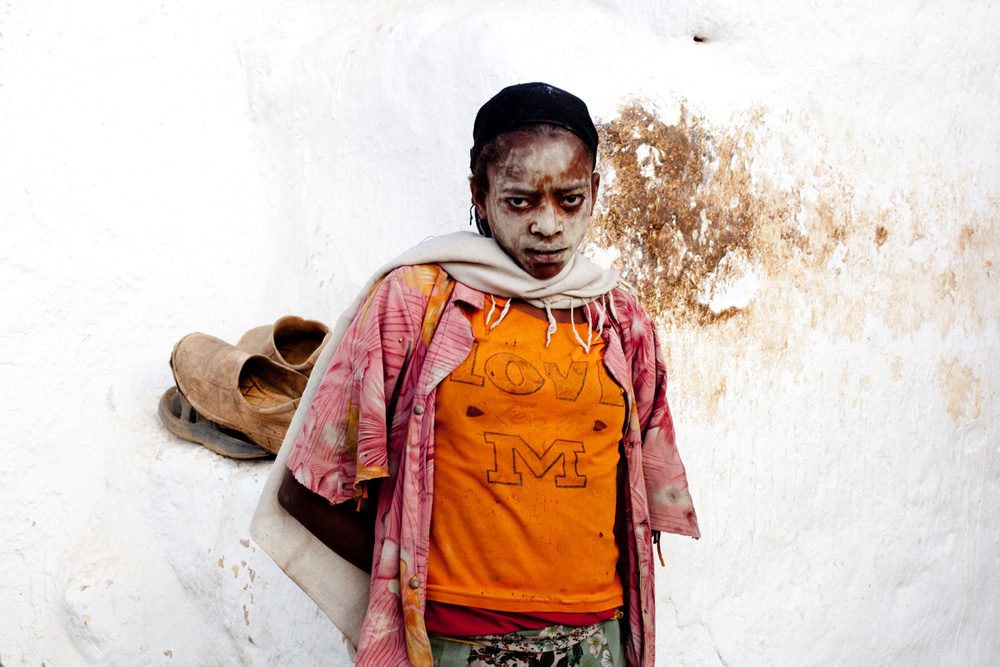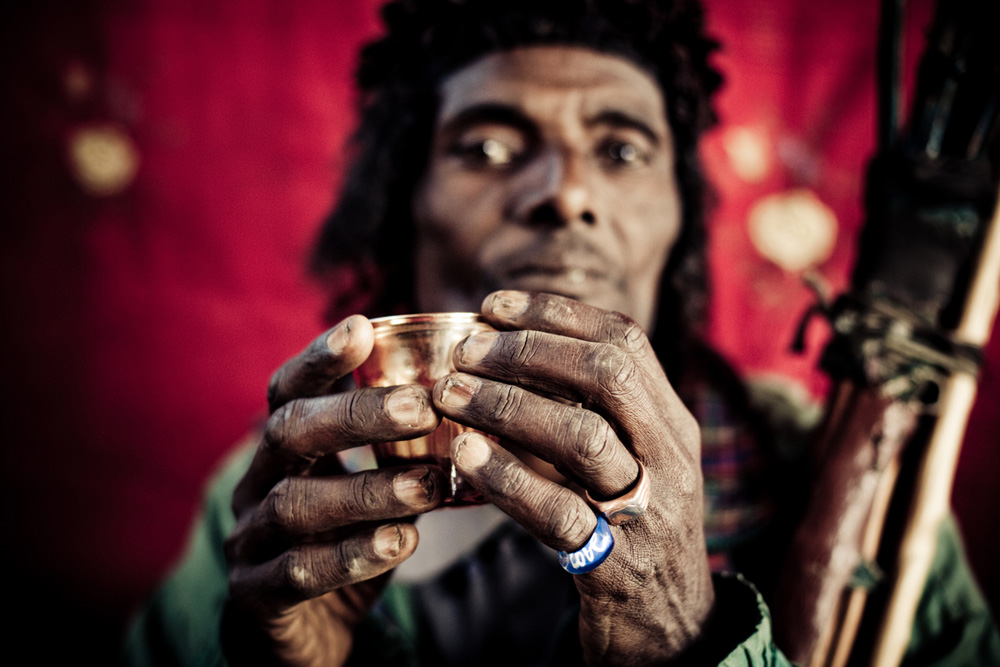Jimmy Nelson, author of “beforethey.com” project is a talented, well financed and well equipped performer of this characteristic genre of colonial photography where noble savage proudly looks, once towards the strange box of glass plate camera, and now fancy digital equipment, and we look from other side into our dreams, ideas, visions of lost innocence, belief that paradise lost is still somewhere out there.
…
Jimmy Nelson, autor projektu “beforethey.com”, jest utalentowanym, dobrze wyposażonym w sprzęt i pieniążki przedstawicielem tego charakterystycznego gatunku kolonialnej fotografii, w której szlachetny dzikus dumnie patrzy, niegdyś w stronę dziwnego pudełka aparatu na szklane płyty a obecnie w obiektyw drogiej cyfry, a my patrzymy z drugiej strony w nasze marzenia, wyobrażenia, wizję utraconej niewinności, wierząc, że utracony raj wciąż gdzieś TAM jest.
The thing is, it probably never existed. All that exists is life, in ever changing form, and by some strange twist of fate, for last 200 years it has been watched by a spectator, tourist. Be it retired German in funny Hawaiian shirt or middle aged brave “adventure” photographer Jimmy Nelson, still both are tourists. They come to see what they expected, what they heard is out there, from those who went before. But life doesn’t like to freeze like it pretends to when shutter is released, in the right moment, right frame, avoiding including what spoils the narrative.
So if they, the tourists, are still naive, they are disappointed, and if they are smart, and know how to play the game, they join, or co-create the theatre.
…
Rzecz w tym, że prawdopodobnie nigdy on nie istniał. Wszystko co istnieje to życie w stale zmieniającej się formie, i dziwnym zrządzeniem losu przez ostatnie 200 lat ma widza, turystę. Czy to emerytowany Niemiec w śmiesznej hawajskiej koszuli, czy odważny fotograf w wieku bardziej średnim, Jimmy, wciąż oboje pozostają turystami. Przyjeżdzają zobaczyć to czego oczekiwali, o czym usłyszeli od tych co przetarli szlak, czasem też aby dostarczyć tego, co oczekuje konsument opowieści. Ale życie nie lubi zamierać, tak jak wydaje się to kiedy otwiera się migawka, we właściwym momencie, właściwym kadrze, w którym nie zmieściło się to co psuje narracje.
Więc jeżeli ci turyści są wciąż naiwni, wracają rozczarowani, ale jeżeli są sprytni, i wiedzą jak grać w te grę, dołączają i współworzą teatr.
I know, from my experience of years of visiting indigneous communities around the world, that “beforethey.com” is most of all expensive romantic theatre and this is why it became so popular. Does anyone still has any doubts that succesful and interesting photography doesn’t seek to represent “objective” reality?
Neither Huaorani Indians watching in their village fake American wrestling on satellite TV, nor the lovers of primitive buying Jimmy Nelson’s book are interested in reality and truth. Myth is way cooler. But for fucks sake, I am the last to tell myth from reality.
…
Wiem z doświadczenia wieloletnich odwiedzin różnych rdzennych społeczności świata, że “beforethey.com” jest przede wszystkim romantycznym a zarazem dobrze zrealizowanym spektaklem teatralnym i dlatego własnie jest taki popularny. Czy ktokolwiek jeszcze ma wątpliwości że odnosząca sukces, atrakcyjna fotografia zajmuje się poszukiwaniem prawdy?
Ani Indianie Huaorani oglądający w TV w swojej wiosce ściemniane amerykańskie zapasy, ani miłoścnicy prymitywnego dzikusa kupujący książkę Nelsona nie są zainteresowani rzeczywistością ani prawdą. Mit jest o wiele ciekawszy. Ale ja jestem zapewnie jednym z ostanich którzy mieliby prawo roztrzygać o granicy między mitem a rzeczywistością.
Therefore I will just show you some frames of the people and daily life in the village of Bameno in the Yasuni national park in Ecuador. In my opinion, these images present definitely “after”, in this funny occidental linear way of seeing things, and something Jimmy Nelson “forgot” to include in his fairy tale ( http://www.beforethey.com/tribe/huaorani )
…
Pokażę zatem jedynie kilka klatek przedstawiających ludzi i codzienne życie w wiosce Bameno w parku narodowym Yasuni, tej samej w której powstały zdjęcia Nelsona. Moim zdaniem te zdjęcia to zdecydowanie “po” , w tej zabawnej, okcydentalnej linearnej manierze postrzegania czasu, i pokazują one coś, co Jimmy Nelson “zapomniał” włączyć do swojej baśni ( http://www.beforethey.com/tribe/huaorani )
…
…
…
…
…
…
Having said all of the above, I must add I understand value of theatre. In this case, apart from just enriching the world with another way of being, playing that game is a source of revenue for Huaorani who, still knowing their forest, could serve as its rangers, guardians of what is left of one of most biodiverse places on earth, currently threatened by petrol extraction plans of government of Ecuador, and ultimately, by our greed. So even if we come to watch expensive theatre, that theatre is real , as real as tarmac road, oil pollution and supermarkets will be. As we fight invasion of commercial flood of banks and malls in hearts of our cities, and understand it is good to leave some of public space for things such as art, so perhaps we should leave ourselves – and the Huarani – the luxury of performing that theatre of theirs.
…
Po napisaniu tego co wyżej powinienem jednak dodać, że rozumiem wartość teatru. W tym wypadku, poza wzbogaceniem świata o kolejną formę, kolejny sposób bycia, grając w tę grę Huaorani zyskują źródło dochodu, grając kartą pierwotnej wiedzy i życia, a wciąż naprawdę znając swój las, mogą służyć jako jego strażnicy, opiekuni tego co pozostanie z jednego z najbardziej zróżnicowanych ekosystemów świata, obecnie zagrożonego przez związane z eksploatacją ropy plany ekwadorskiego rządu, a tak naprawdę, przez naszą chciwość. Więc nawet jeżeli mamy tam jechać oglądać drogi teatr, ten teatr jest rzeczywistością, tak jak rzeczywistością jest asfaltowa droga, zanieczyszczenie ropą i supermarkety, które mogą go zastąpić. Tak jak walczymy z inwazją, z komercyjną powodzią banków i centr handlowych w sercach naszych miast, rozumiejąc że dobrze pozostawić chociaż część publicznej przestrzeni na cele takie jak sztuka, tak też, byc może, powinnismy pozostawić sobie – i Huaorani – ten luksus uczestniczenia w ich teatrze.


